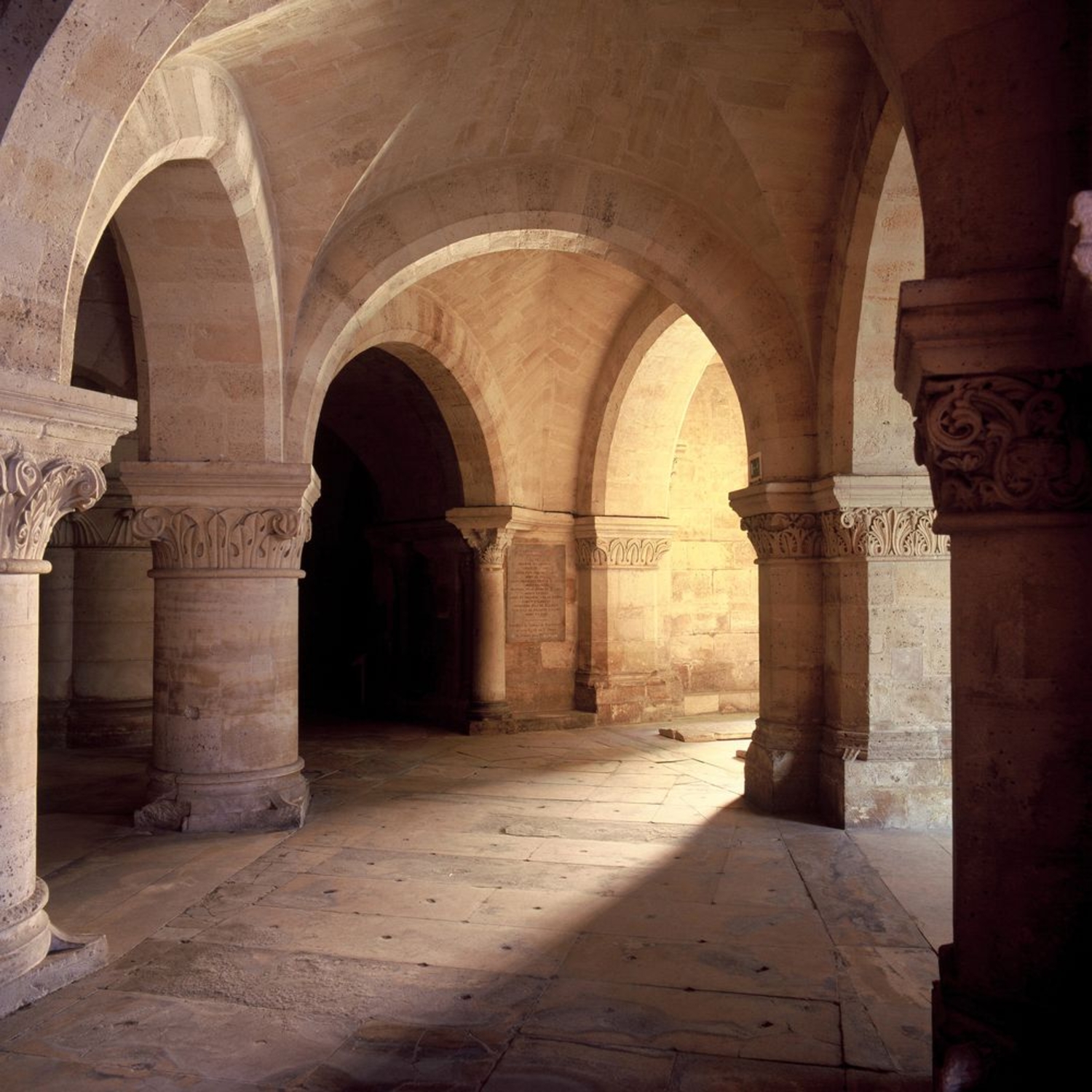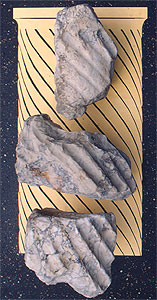- Home
- The town and the abbey
- From the royal abbey to the castellum
- The royal abbey
- A column from the Carolingian basilica
Fragment of a Roman-period column shaft in Synnada marble. © UASD.
The excavation of several waste pits in the residential area to the north of the basilica revealed fragments of a marble column whose fluting consisted of twenty-five spiraling grooves. This discovery may be linked to a description by abbot Suger (1122-1151) of the Carolingian basilica, which states that its colonnades consisted of many types of marble. In addition, the reconstitution of the radius of the shaft corresponds exactly to the radii of fitting holes that were made in several square bases that were discovered in the nave of this church by Sumner McKnight Crosby between 1946 and 1948.
The column was sculpted in Synnada marble, which comes from a quarry near Afyon in Turkey. Before quarrying activities came to an end in late Antiquity, stone from this site had been exported throughout the Mediterranean basin. It was thus taken from a classical monument in order to be re-used in the basilica.
The history of Carolingian architecture is filled with cases in which the classical monuments of Italy were highly coveted for their marbles. Between 750 and 757, Fulrad, abbot of Saint-Denis, travelled to Rome several times as the representative of King Pépin to the Pope. We also know that the abbot designed the new church along the lines of Roman basilicas. But did he have the means to bring pieces like this column shaft all the way from Italy ?
Three hundred and fifty years later, Suger restored the nave of the Carolingian church. It was perhaps on this occasion that this marble column was replaced by a modern shaft.

